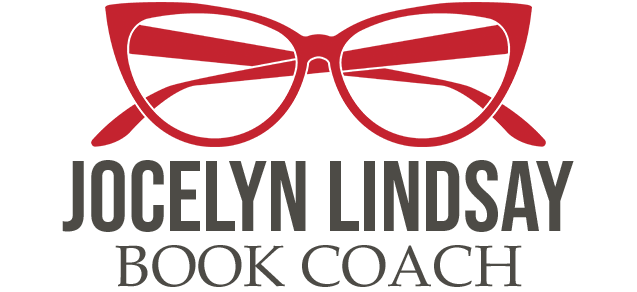Navigating the Ups and Downs: A Guide to the Writing Process
This image of the writing process was created using DALL-E.
In the last email, we talked a little about mindset when it comes to marketing your book.
If we stick with the idea that book marketing is a party, now that you know you're having a party, you need to figure out who's on the invite list.
Understanding your target audience is essential because it allows you to tailor your marketing efforts to reach the right people—those who will connect with your story, enjoy your writing, and ultimately become loyal readers. (We all want that, right?)
Marketing a book without a clear understanding of your audience is like opening the door to your house and inviting everyone who wandered by to your party. You might get a few ideal attendees, but you’ll waste time and resources trying to find those perfect people.
No matter how much you might wish it, everyone is not your audience. Trying to market to everyone dilutes your message and makes it less effective. It's like trying to please everyone at your party—you'll end up pleasing no one.
Focusing on a specific audience allows you to create content and campaigns that resonate deeply, making your marketing efforts more impactful and efficient. By zeroing in on your ideal readers, you can build stronger connections and cultivate a dedicated fan base that eagerly awaits your next book.
Knowing your audience means knowing where to find them, what they care about, and how to communicate with them effectively. This understanding helps you create more targeted, engaging, and successful marketing campaigns.
Many of the authors I've talked to, especially those new to the publishing, feel overwhelmed.
Common responses to my conversations in my last email were things like:
"What if I’m doing everything wrong?"
"I’ve tried so many tactics, but nothing seems to work."
"I’m doing the social media thing, running Amazon Ads, and trying everything I can think of, but where are the results?"
The fear of wasting money on ineffective strategies contributes to marketing reluctance, making the whole process even more daunting.
It’s not that you’re afraid of marketing; you’re frustrated by it. I get it. There is no magic wand for marketing. (I wish!)
Marking isn't a one and done thing. It takes time. This is a good thing because it means you don't have to learn everything overnight. You also don't only get one shot at it. You can always improve what you're doing.
So let's dig in.
Gathering and Analyzing Data
Marketing doesn't have to be complicated, but one of the biggest mistakes I see authors make when it comes to marketing is the "spray and pray" strategy. Many authors think posting whatever they feel like on social media daily is enough to find, attract, and retain their audience. Unfortunately, it's not.
You need to be strategic in the same way you were strategic about writing your book. You didn't just throw a bunch of words on the page and hope a coherent book magically happened. (I hope not!)
I suggest starting a marketing notebook or document, somewhere you can keep track of this information because it's going to change and you want to track that change.
I've put an example workbook page up on Google Docs. Feel free to make a copy and adjust it however you like. (If you make something really cool, let me know, I'd love to see it.)
Identifying Your Audience
Here are three things you can do right now to help you identify your audience:
Step 1: Who Do You Think Your Audience Is Now?
What would you answer if I asked who do you think your audience is?
Write about who you think is reading, or will read, your book.
Step 2: Research Comps
Look at authors, books, and readers in your genre with a similar audience to yours:
Who are the readers these authors are targeting? (Look at reviews, websites, social media, etc.)
What kind of readers are reviewing and recommending these books? (demographic information)
What are the major themes and tropes of these books?
What marketing strategies are these authors using? This can be whatever you notice.
Is this author's audience the same as yours? If it's different, what do you think it is?
Step 3: Observe Your Audience
Use social media and online forums to learn about potential readers:
Join groups related to your book’s genre and observe the discussions.
Monitor content that resonates with your audience and note their reactions (videos, quotes, images, memes, etc.).
Identify which platforms and channels they use most frequently (Instagram, Facebook, TikTok, LinkedIn, YouTube, etc.)
Note: Different social media platforms attract different demographics, and the context in which content is consumed varies (We'll get into this in an upcoming article). For now, pick one or two platforms to follow. Ideally, these will be the platforms receiving the most audience engagement.
Create Your Reader Description
Now that you've gathered information on the above questions, create a detailed description of the reader you want to attract:
Give your ideal reader a name, age, gender, location, income, education, interests, values, and lifestyle.
Describe their interests, reading habits, and what they look for in a book.
Identify where you can find them.
Pro Tip: Determining who your audience isn't can be just as important as figuring out who your audience is. Include this information.
Hello!
My name is Jocelyn.
Story warrior, book lover, day dreamer, gardener, and creative. I help serious writers roll up their sleeves, get their novel ready for publishing, and reach readers. When I’m not elbow-deep in the story trenches, I’m outside world-building in my garden and battling weeds with my three criminal mastermind cats.
GET IT NOW
Don’t write another chapter until you grab the 10 Step Chapter Checklist.
Transform your chapters from blah to badass.


